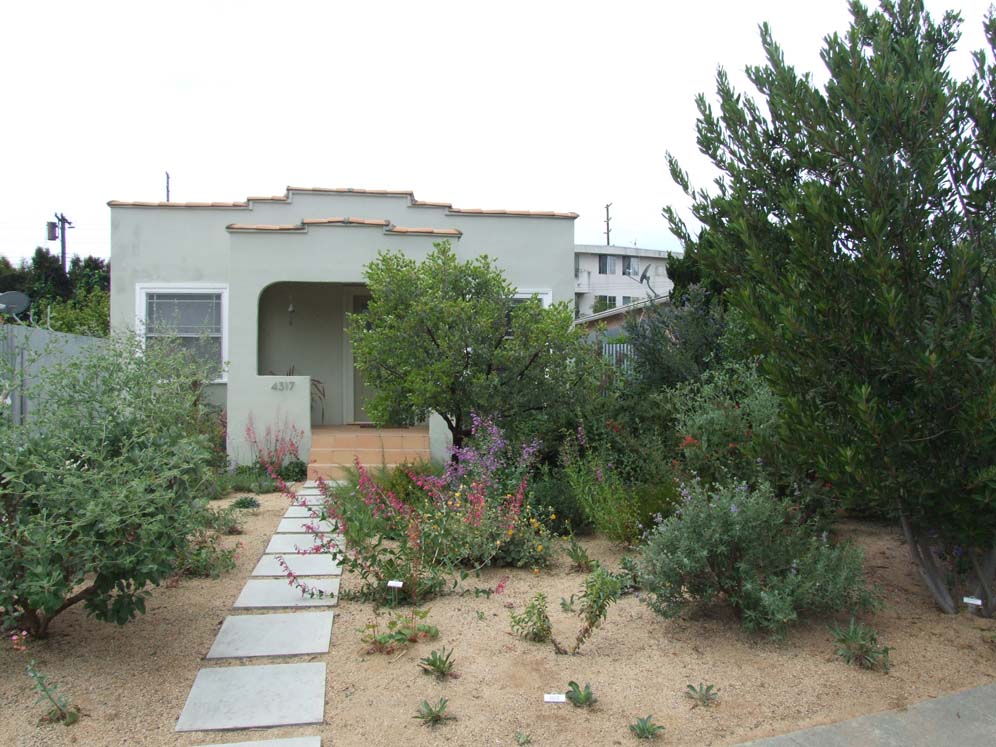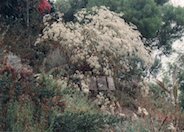
Common name:St. Catherine's Lace
Botanical name:Eriogonum giganteum
St. Catherine's Lace is a large open shrub growing 4'-5' high and 3'-4' wide with woolly, gray leaves and flat clusters of cream flowers that turn rust with age. It is a CA native that is drought tolerant. It attracts butterflies and beneficial insects. - Cornflower Farms
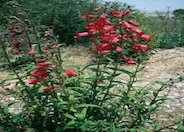
Common name:Firebird Border Penstemon
Botanical name:Penstemon hybrids 'Firebird'
Penstemon gloxiniodes 'Firebird' is perennial, but sometimes treated as an annual. It has a compact, bushy, upright growth to 4' tall. Tubular summer flowers in loose spikes appear at the stem ends, in a rosy red color.
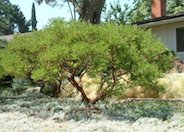
Common name:Howard McMinn Manzanita
Botanical name:Arctostaphylos densiflora 'Howard McMinn
This shrub is highly appreciated for its decorative characteristics, which include a dense show of small, pale pink urn-shaped flowers. Above all, it is the mahogany-red to brown bark (which peels beautifully) that is the major attraction. Its fruit resembles the tike apple, and the flowers contrast perfectly to the light green leaf (which can get rather tough). It blooms from late winter to spring. - Cornflower Farms
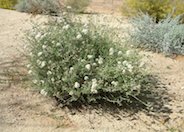
Common name:Arizona Flattop Buckwheat
Botanical name:Eriogonum fasciculatum polifolium
Flattop buckwheat is a clumping, grass-like plant that grows to 3' tall by 4' wide. White to pink flowers appear in dense, flattened clusters throughout the summer. Plants are tolerant of drought and heat. It is adaptable to most soil conditions but prefers a coarse, well drained site in full sun. It has a naturally low, rounded form. Leaves are dark and gray green with white woolly undersides. This is a highly combustible plant.
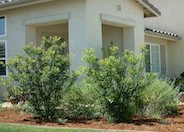
Common name:Pacific Wax Myrtle
Botanical name:Myrica californica
This large shrub/tree can reach 30' tall and has glossy, dark green leaves with purple nutlets that attract birds. It is used very effectively as a screen.
| Designer: David Shields | Modern Home Ancient Plants 5 |
Photographer: GardenSoft |
Soils and Compost:
Maintain a two to four inch layer of mulch on the soil surface to reduce weeds, infiltrate rain water, and reduce compaction.
Water Saving Tip:
Be sure to fix all leaks promptly no matter how small they may seem.
Integrated Pest Management:
Drip and other smart irrigation delivers water directly to roots, allowing no excess water for weeds.
